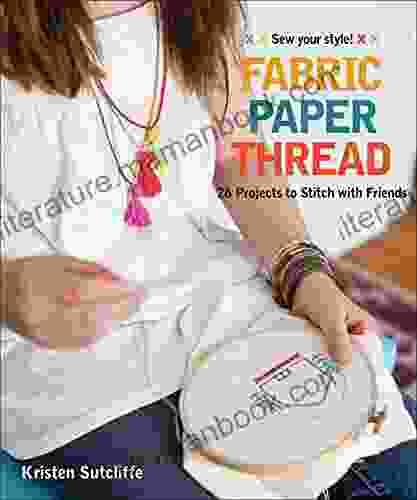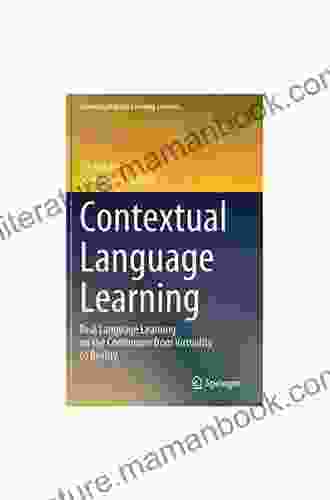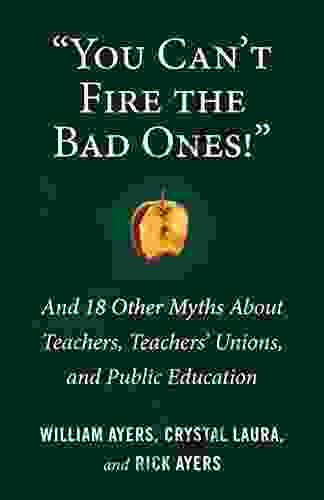Real Language Learning On The Continuum From Virtuality To Reality Chinese

In the world of language learning, there is a growing continuum from virtuality to reality. On one end of the spectrum, we have virtual reality (VR) and augmented reality (AR),which offer immersive experiences that can transport learners to another world. On the other end, we have reality, where learners interact with native speakers and experience the language in its natural context.
5 out of 5
| Language | : | English |
| File size | : | 7121 KB |
| Text-to-Speech | : | Enabled |
| Screen Reader | : | Supported |
| Enhanced typesetting | : | Enabled |
| Word Wise | : | Enabled |
| Print length | : | 360 pages |
Chinese language learning is a particularly interesting case study for exploring this continuum. Chinese is a tonal language, which means that the meaning of a word can change depending on the tone of voice used. This can be a difficult concept to master for non-native speakers, but it is essential for effective communication in Chinese.
In this article, we will explore the continuum from virtuality to reality Chinese learning. We will discuss the benefits and challenges of learning Chinese in each context and share tips for making the most of your language learning journey.
Virtual Reality (VR)
VR is a computer-generated simulation of a three-dimensional environment that can be interacted with in a seemingly real way. VR headsets allow users to enter virtual worlds and interact with objects and people as if they were actually there.
VR can be a powerful tool for language learning. It can provide learners with immersive experiences that allow them to practice speaking, listening, and reading in a safe and controlled environment. For example, learners can use VR to:
- Attend virtual classes with native speakers
- Explore virtual worlds and interact with virtual characters
- Play language learning games
VR can also be beneficial for learning Chinese tones. Learners can practice speaking Chinese words and phrases in VR and receive instant feedback on their pronunciation.
However, there are also some challenges to using VR for language learning. One challenge is that VR headsets can be expensive. Another challenge is that VR can be isolating, as learners may not have the opportunity to interact with other people in the virtual environment.
Augmented Reality (AR)
AR is a technology that superimposes digital information onto the real world. AR glasses or headsets allow users to see the world around them with digital information overlaid on top.
AR can be a useful tool for language learning. It can provide learners with real-time information and assistance in the real world. For example, learners can use AR to:
- Translate signs and menus
- Get pronunciation feedback on spoken Chinese
- Learn about Chinese culture and history
AR can also be beneficial for learning Chinese tones. Learners can use AR to see the tones of Chinese words and phrases superimposed on the real world.
However, there are also some challenges to using AR for language learning. One challenge is that AR glasses or headsets can be expensive. Another challenge is that AR can be distracting, as learners may be tempted to focus on the digital information rather than the real world.
Mixed Reality (MR)
MR is a combination of VR and AR. MR headsets allow users to interact with both virtual and real objects in the same environment.
MR can be a powerful tool for language learning. It can provide learners with the immersive experiences of VR and the real-world interaction of AR. For example, learners can use MR to:
- Attend virtual classes with native speakers in a real-world environment
- Explore virtual worlds and interact with virtual characters while still being able to see and interact with the real world
- Play language learning games that combine virtual and real-world elements
MR can also be beneficial for learning Chinese tones. Learners can practice speaking Chinese words and phrases in MR and receive real-time feedback on their pronunciation while still being able to see and interact with the real world.
However, there are also some challenges to using MR for language learning. One challenge is that MR headsets can be expensive. Another challenge is that MR can be complex to use, as learners may need to learn how to use both VR and AR technology.
Reality
Reality is the most traditional way to learn a language. It involves interacting with native speakers and experiencing the language in its natural context.
Reality can be a great way to learn Chinese. Learners can immerse themselves in the language and culture by living in a Chinese-speaking country, taking classes with native speakers, or participating in language exchange programs.
However, there are also some challenges to learning Chinese in reality. One challenge is that it can be difficult to find native speakers to interact with, especially if you live in a non-Chinese-speaking country. Another challenge is that it can be expensive to live and study in a Chinese-speaking country.
The Continuum From Virtuality To Reality
The continuum from virtuality to reality is a spectrum of language learning experiences. Each context has its own unique benefits and challenges. The best way to learn Chinese is to find a combination of contexts that works for you.
If you are just starting out, you may want to start with virtual reality or augmented reality. These contexts can provide you with a safe and controlled environment to practice your language skills. Once you have a good foundation, you can then transition to reality and start interacting with native speakers.
No matter which context you choose, the most important thing is to be consistent with your language learning. The more you practice, the faster you will learn.
Tips For Making The Most Of Your Language Learning Journey
- Set realistic goals. Don't try to learn too much too quickly. Focus on making gradual progress and celebrating your successes along the way.
- Find a learning method that works for you. There are many different ways to learn a language. Experiment with different methods until you find one that you enjoy and that helps you make progress.
- Be consistent with your learning. The more you practice, the faster you will learn. Try to set aside some time each day to study Chinese.
- Immerse yourself in the language. The best way to learn a language is to immerse yourself in it. Surround yourself with Chinese language and culture. Watch Chinese movies and TV shows, listen to Chinese music, and read Chinese books and articles.
- Find a language partner. One of the best ways to improve your language skills is to practice speaking with a native speaker. Find a language partner who can help you practice your speaking and listening skills.
- Don't be afraid to make mistakes. Everyone makes mistakes when they are learning a new language. The important thing is to learn from your mistakes and keep practicing.
- Have fun! Learning a language should be enjoyable. Find activities that you enjoy and that help you learn. Whether you are studying grammar, practicing your listening skills, or immersing yourself in the culture, make sure that you are having fun along the way.
Learning Chinese can be a challenging but rewarding journey. By understanding the continuum from virtuality to reality and finding a combination of contexts that works for you, you can make the most of your language learning experience and achieve your goals.
5 out of 5
| Language | : | English |
| File size | : | 7121 KB |
| Text-to-Speech | : | Enabled |
| Screen Reader | : | Supported |
| Enhanced typesetting | : | Enabled |
| Word Wise | : | Enabled |
| Print length | : | 360 pages |
Do you want to contribute by writing guest posts on this blog?
Please contact us and send us a resume of previous articles that you have written.
 Top Book
Top Book Novel
Novel Fiction
Fiction Nonfiction
Nonfiction Literature
Literature Paperback
Paperback Hardcover
Hardcover E-book
E-book Audiobook
Audiobook Bestseller
Bestseller Classic
Classic Mystery
Mystery Thriller
Thriller Romance
Romance Fantasy
Fantasy Science Fiction
Science Fiction Biography
Biography Memoir
Memoir Autobiography
Autobiography Poetry
Poetry Drama
Drama Historical Fiction
Historical Fiction Self-help
Self-help Young Adult
Young Adult Childrens Books
Childrens Books Graphic Novel
Graphic Novel Anthology
Anthology Series
Series Encyclopedia
Encyclopedia Reference
Reference Guidebook
Guidebook Textbook
Textbook Workbook
Workbook Journal
Journal Diary
Diary Manuscript
Manuscript Folio
Folio Pulp Fiction
Pulp Fiction Short Stories
Short Stories Fairy Tales
Fairy Tales Fables
Fables Mythology
Mythology Philosophy
Philosophy Religion
Religion Spirituality
Spirituality Essays
Essays Critique
Critique Commentary
Commentary Glossary
Glossary Bibliography
Bibliography Index
Index Table of Contents
Table of Contents Preface
Preface Introduction
Introduction Foreword
Foreword Afterword
Afterword Appendices
Appendices Annotations
Annotations Footnotes
Footnotes Epilogue
Epilogue Prologue
Prologue Muhammad Adam Mubasher
Muhammad Adam Mubasher Park Honan
Park Honan Sophie Gregoire
Sophie Gregoire Kaye Lynne Booth
Kaye Lynne Booth Laura Wade
Laura Wade Carolina Rogoll
Carolina Rogoll Celia Kinsey
Celia Kinsey Ori Hofmekler
Ori Hofmekler Michaela Morgan
Michaela Morgan Hossein Amerkashi
Hossein Amerkashi Tomohito Oda
Tomohito Oda Liza Mundy
Liza Mundy Michael Ledwidge
Michael Ledwidge Charlotte Mcconaghy
Charlotte Mcconaghy Flora Mcconnell
Flora Mcconnell J Abdelmesseh
J Abdelmesseh Sammy Parker
Sammy Parker Dana Cornwell Bodney
Dana Cornwell Bodney Niall Williams
Niall Williams Katie Banks
Katie Banks
Light bulbAdvertise smarter! Our strategic ad space ensures maximum exposure. Reserve your spot today!

 Eugene PowellAm I Suitable for Peritoneal Dialysis? A Comprehensive Guide to Evaluating...
Eugene PowellAm I Suitable for Peritoneal Dialysis? A Comprehensive Guide to Evaluating... Neil ParkerFollow ·3.4k
Neil ParkerFollow ·3.4k Hugh ReedFollow ·3.7k
Hugh ReedFollow ·3.7k Vernon BlairFollow ·13.5k
Vernon BlairFollow ·13.5k Fyodor DostoevskyFollow ·11.5k
Fyodor DostoevskyFollow ·11.5k Terence NelsonFollow ·8.4k
Terence NelsonFollow ·8.4k Devon MitchellFollow ·15k
Devon MitchellFollow ·15k Glenn HayesFollow ·16.2k
Glenn HayesFollow ·16.2k Owen SimmonsFollow ·11.9k
Owen SimmonsFollow ·11.9k

 Melvin Blair
Melvin BlairJames Wade's Captivating Tale: Delving into the Second...
In the heart of a realm where the veil...

 Eric Hayes
Eric HayesFabric Paper Thread: 26 Projects to Stitch with Friends
Get ready to embark on a captivating journey...

 Greg Foster
Greg FosterThe Grammy Awards Record of the Year 1958-2024: A...
The Grammy Awards, the most prestigious...

 Alex Foster
Alex FosterSaragarhi: The Forgotten Battle of the British Empire
On September 12,...
5 out of 5
| Language | : | English |
| File size | : | 7121 KB |
| Text-to-Speech | : | Enabled |
| Screen Reader | : | Supported |
| Enhanced typesetting | : | Enabled |
| Word Wise | : | Enabled |
| Print length | : | 360 pages |














